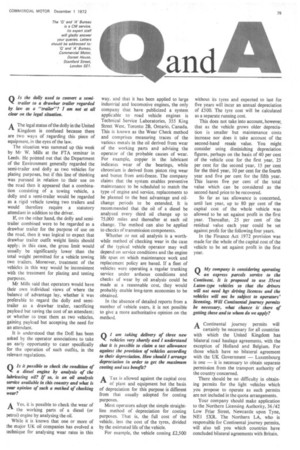Is it possible to check the condition of a diesel
Page 81

If you've noticed an error in this article please click here to report it so we can fix it.
engine by analysis of the lubricating oil? If so, is an oil analysis service available in this country and what is your opinion of such a method of checking wear?
A Yes, it is possible to check the wear of the working parts of a diesel (or petrol) engine by analysing the oil.
While it is known that one or more of the major UK oil companies has evolved a technique for analysing wear rates in this
way, and that it has been applied to large industrial and locomotive engines, the only company that have publicized a system applicable to road vehicle engines is Technical Service Laboratories, 355 King Street West, Toronto 2B, Ontario, Canada. This is known as the Wear Check method and comprises measuring traces of the various metals in the oil derived from wear of the working parts and advising the operator of the probable causes of wear. For example. copper in the lubricant indicates wear of the bearings, while chromium is derived from piston ring wear and boron from anti-freeze. The company claims that the system enables preventive maintenance to be scheduled to match the type of engine and service, replacements to be planned to the best advantage and oilchange periods to be extended. It is recommended that the oil of a diesel be analysed every third oil change up to 75,000 miles and thereafter at each oil change. The method can also be applied to checks of transmission components.
Whether or not oil analysis is a worthwhile method of checking wear in the case of the typical vehicle operator may well depend on service conditions and the engine life span on which maintenance work and replacement policy are based. If a fleet of vehicles were operating a regular trunking service under arduous conditions and checks of wear by oil analysis could be made at a reasonable cost, they would probably enable long-term economies to be obtained.
In the absence of detailed reports from a number of vehicle users, it is not possible to give a more authoritative opinion on the method.
































































































































